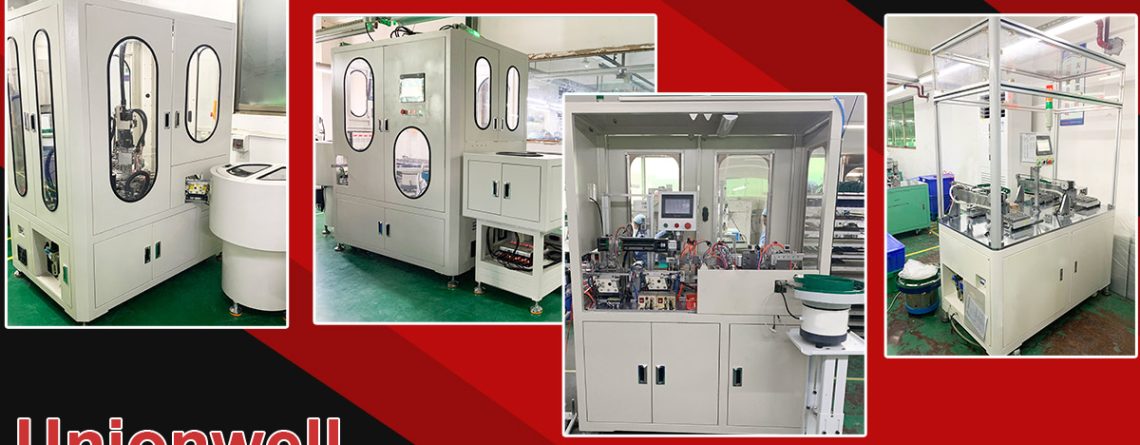Difference Between SPST, SPDT And DPDT

Switch circuit type
- SPDT
- SPST
- DPDT
Switches are basic methods for opening and closing an electrical circuit. The circuits vary from simple make/break circuits to multi-makes and multi-break circuits. Though the logic is quite simple, an excellent circuit must be chosen for the application. So let us look at each circuit style and better understand the mechanics of the switch and the best-applied application for each circuit.
SPDT Circuits – Single Pole, Double Throw
One of the most common styles of switches is the SPDT Mechanical switch. The SPDT stands for Single Pole, Double Throw. As stated, there is a standard terminal on the switch where the voltage and current are applied, and that voltage and current can be either directed to the normally open or normally closed terminal. The direction of the current flow is typically directed by a mechanical roller lever that actuates the switch.
Benefits of the SPDT mechanical switch
- Low cost
- Proven reliability for most applications
- Switches’ ability to function with high voltages and currents
- Higher switching currents allow the device to control
- Relays
- Plant devices such as pumps
- And drive motors
Mechanics of the switch
The SPDT switch has three connections – the NO (Normalmente aberto), NC (Normalmente fechado), and the C (Common). Input current enters the switch through the common and makes the circuit either with the NO (normally open) or the NC (normalmente fechado) contacts.
Formulários
In control rooms, two lights are used for each valve position. One light for “on” and one for “off,” thus assuring that the switch functions regardless of its position.
Look for switches specified with stiffer contact springs and engineered construction materials. These small details will allow the switch to resist dirt and debris better and prevent freeze-up in cold conditions. A common problem is where the mechanical internals of the switch is frozen in place. This condition is prevalent with “off-the-shelf” switches.
DPDT circuits – double pole, double throw
Benefits of the DPDT mechanical switch
- Ability to carry two independent signals
- Failover capabilities
- Switches’ ability to function with high voltages and currents
- Higher switching currents allow the device to control
- Relays
- Plant devices such as pumps
- And drive motors
- Mechanics of the DPDT Switch
The DPDT switch is, in effect, the equivalent of two SPDT switches that operate in tandem. The DPDT switch is two SPDT circuits located internally to the switch housing, and these two circuits are actuated in tandem by a common lever mechanism inside the switch housing. There are typically six terminals on a DPDT mechanical switch. Two C (Common), Two NO (Normalmente aberto), and Two NO (Normalmente fechado).
DPDT applications
Because of this design, mechanical DPDT switches are often used for simultaneous switching two independent signals that must operate in tandem. One example frequently used by the DPDT design is when one switch circuit is used to send a low-level signal back to the control room for PLC or DCS processing. Ao mesmo tempo, the second internal switch circuit is used to drive a relay for another device. The application may switch two different signal voltages and currents with both completely isolated circuits.
Another critical application handled simply with the DPDT mechanical switch is redundant signaling applications. A failover circuit is already set up if there is signal loss from the first circuit.
SPST circuits – single pole, single throw
Benefits of the SPST mechanical switch
- Simple design
- More accessible to set up and wire too
- Less required cabling
- Not a common design
- Mechanics of the SPST Switch
The SPST mechanical switch has two terminal connections – the NO (Normalmente aberto) and the C (standard). When the switch is actuated, the circuit is closed (or made), and current flows from the common terminal through to the normally open terminal. When the SPST mechanical switch is not actuated, the circuit is not closed; instead, it is an open circuit (not made). The design is analogous to a simple light switch on (lighted) or off (Sombrio).
SPST applications
Advanced process control systems can use SPST mechanical switches in place of two wire sensors. As is commonly done, one can use two of the three contacts of a standard SPDT switch to mimic an SPST.
O fabricante chinês de micro interruptores Unionwell oferece >>
Huizhou Unionwell Sensing & Control Electronics Co., Ltd specializes in producing quality micro switches for the automotive industry and white goods of home appliances. Os principais produtos incluem microinterruptores básicos, interruptores à prova d'água, pressostatos de ar, interruptores de teclado mecânicos, e interruptores de porta.
Para melhores preços, tempo de espera, e garantias de controle de qualidade, we acquired Huizhou Greetech Electronics Co., Ltda em 2021. Tornamos nossa base de produção na China com mais de 500 funcionários e um 250 capacidade de produção milhões de peças/ano.
With the subsidiary sales branch Guangzhou Unionwell Sensing & Control Technology Co., Ltd founded, nosso alcance global abrange a América do Norte, Europa, Ásia, e América do Sul.
A maioria dos nossos parceiros de negócios/clientes finais são globais 500 empreendimentos, incluindo marcas mundialmente famosas de eletrodomésticos e fornecedores automotivos líderes na América do Norte e Europa.
We are launching a new industrial base at Longmen, Huizhou, Província de Guangdong, que funcionará como sede da Unionwell. Equipamentos de automação serão introduzidos, melhorando maciçamente a capacidade de produção de interruptores de 250 milhões de peças para mais 1.3 bilhões de peças/ano.
Para mais microinterruptores, Por favor, visite o nosso web site:
https://www.unionwellswitch.com
Or send an email to know more information: inquir@unionwellswitch.com.

